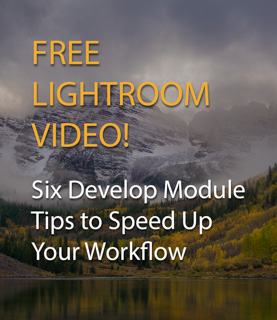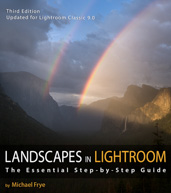by Michael Frye | Jul 26, 2020 | Light and Weather
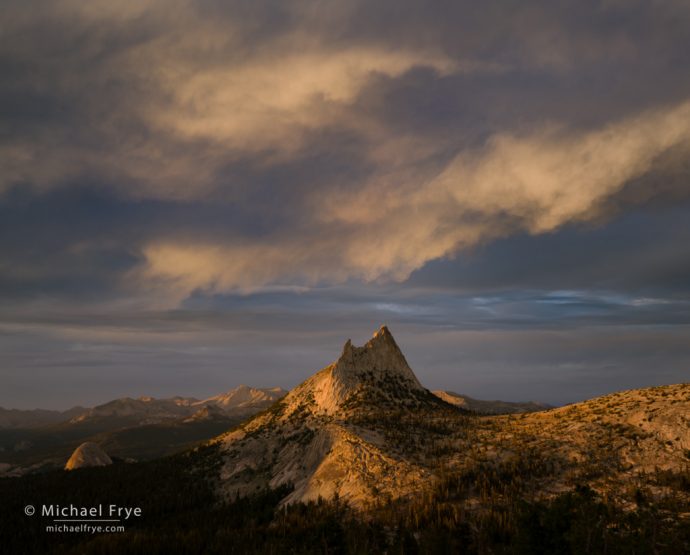
Peak and clouds, Yosemite. 32mm, 1/15th sec. at f/11, ISO 100.
Summer is the dry season in California. Typically, in most of the state, one sunny day follows another, for months on end.
But there are a couple of exceptions. Along the coast, summer is the foggiest time of year. Fog can be so persistent that some spots may barely see the sun for days, or even weeks.
(more…)
by Michael Frye | May 26, 2020 | Composition, Light and Weather
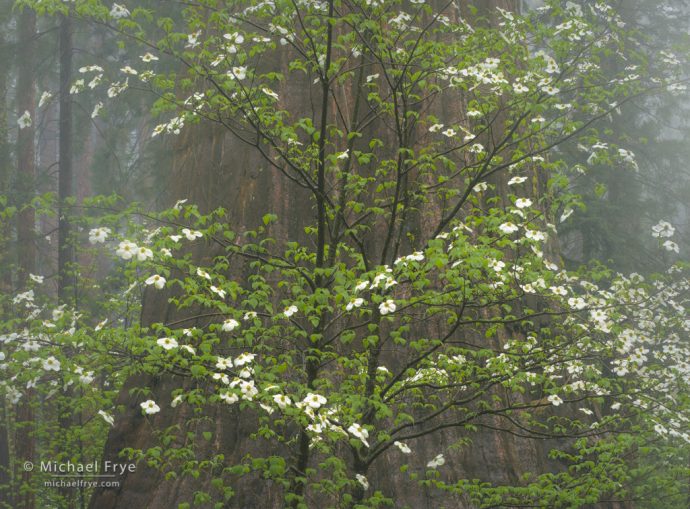
Dogwood and giant sequoia in the fog, Sierra Nevada, California. Fog is a wonderful complement to forest scenes; here, some ephemeral fog lasted just long enough for me to capture this image. 70mm, polarizer, 0.7 seconds at f/16, ISO 100.
People seem to love trees and forests. I know I do.
But forests can be difficult to photograph. Natural forests are usually a study in chaos, with haphazard arrangements of branches, trunks, logs, and leaves. There’s an organic order to all that, with trees and understory plants growing to take advantage of small patches of sunlight, and a cycle of birth, growth, death, and decay.
But visual order can be hard to find amid all that clutter. The chief challenge in photographing forests is usually finding a way to simplify things, and make order out of chaos.
(more…)
by Michael Frye | Apr 20, 2020 | Advanced Techniques, Digital Photography Basics, Photography Tips
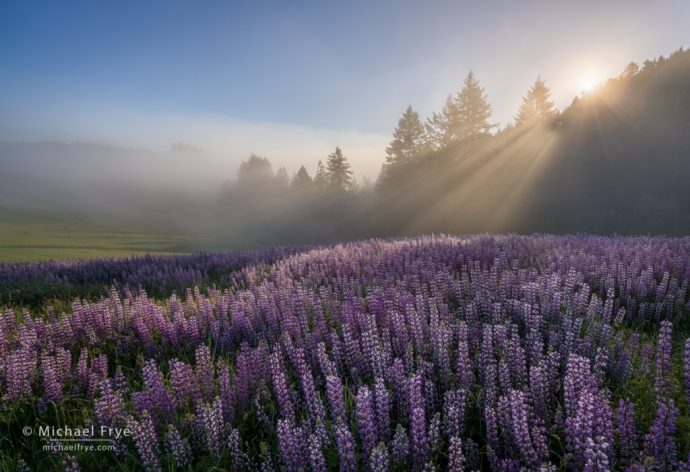
Sun rising over a field of lupines, Redwood NP, California. The focal length was 16mm, and the closest objects to the camera were the flowers at the very bottom of the frame, about two feet from the lens. I used my hyperfocal-distance shortcut to find the optimum focus distance, by doubling the distance from the closest object and focusing at four feet. Then I stopped to down to f/16 to get enough depth of field to make both the foreground and background sharp. 16mm, three bracketed exposures at f/16, ISO 100, blended with Lightroom’s HDR Merge.
In this recent post I talked about the importance of having a solid, well-practiced field routine, so that you don’t forget important steps, and you’ll be less likely to panic when the light gets interesting.
One of the steps in my routine, focusing, deserves a little more attention, so I’m going to cover that step in more detail here.
(more…)
by Michael Frye | Apr 5, 2020 | Light and Weather
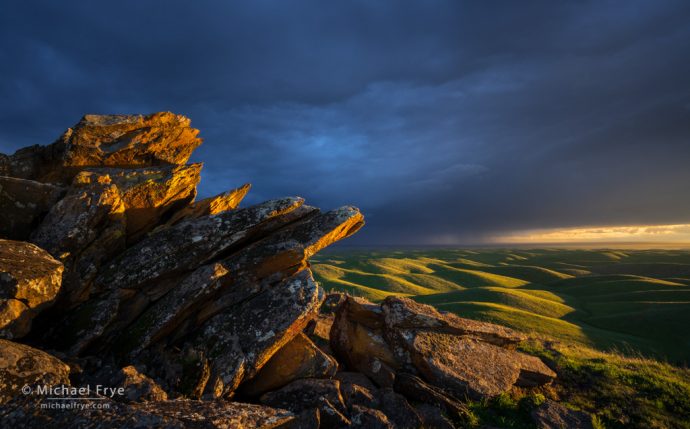
Late-afternoon light in the Sierra Nevada foothills. Most of the photographs I made this afternoon didn’t include a foreground. But I saw this rock outcrop, and kept it in mind for the right opportunity. That opportunity came when the sun slid underneath the clouds and highlighted the jagged forms of the outcrop. 16mm, 1/20th sec. at f/16, ISO 400.
Our winter got off to a wet start in late November and early December, but then fizzled. We hardly got any precipitation during most of December, January, and February – traditionally the wettest months of the year in California, when we get the bulk of our annual rainfall.
That pattern changed a bit in March, with a few good storms to help replenish the previously-anemic Sierra snowpack. And one of our largest storms since last spring is moving into California right now, with forecasters predicting three to four feet of snow above 7,000 feet. Our precipitation for the water year (October 1st through September 30th) will still be below average, but these early-spring storms should, at least, leave us with a decent snowpack for this time of year, with closer-to-normal runoff in our rivers and creeks over the next couple of months, and a more typical summer in the high country.
(more…)
by Michael Frye | Dec 1, 2019 | Light and Weather, Night Photography
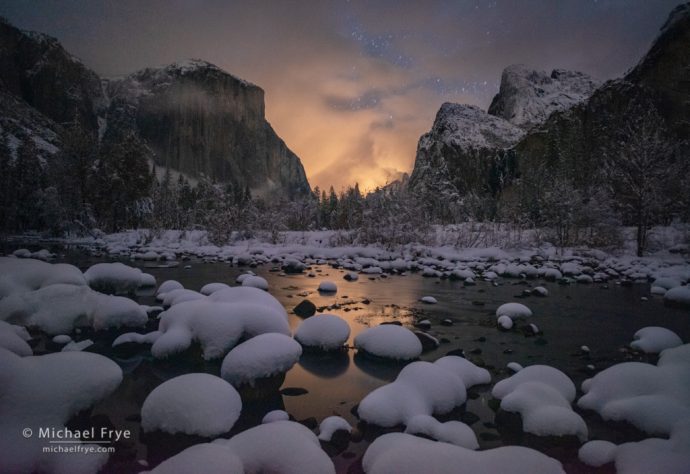
Snowy night along the Merced River, Yosemite. 20mm, 20 seconds at f/2.5, ISO 6400.
I’m not sure who decided that the winter solstice should be the first official day of winter, but I think that official designation is rather absurd. Winter has definitely arrived in many parts of the country, whether it’s official or not, including here in the Sierra. This past week Yosemite got its first precipitation in months, in the form of a cold storm that dropped over a foot of snow on the valley floor.
The snow began on Tuesday, and I kept my eye on the weather, of course, hoping to photograph the storm clearing, and looking for potential rifts in the clouds. Judging by satellite images, some stars might have appeared during the wee hours of Wednesday morning, but that was just a brief break before the clouds closed in again. Late Friday morning the sun finally started to poke through the clouds, so Claudia and I headed up to the valley.
(more…)






